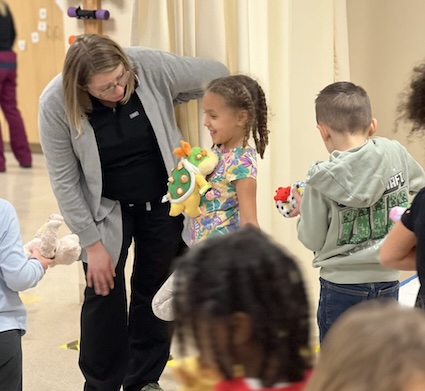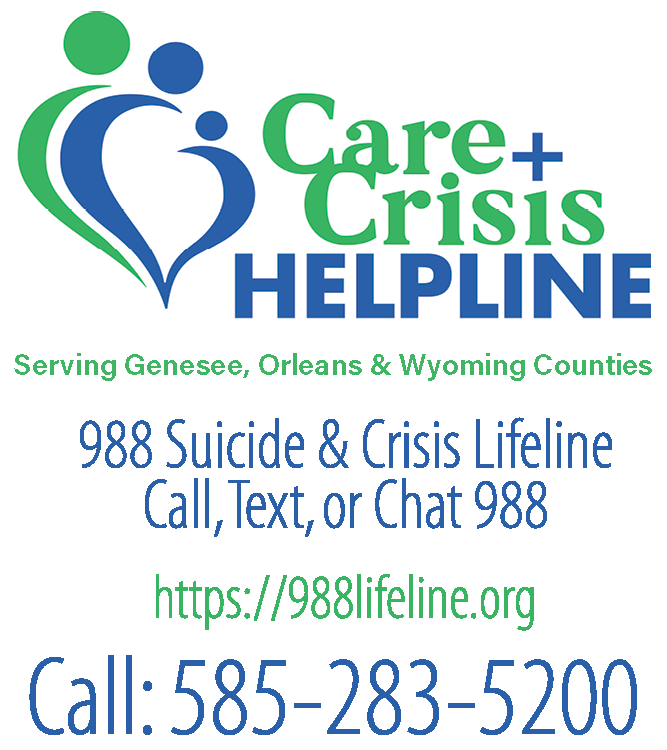Pediatric nurse practitioner shares childhood milestones every parent should know
By Leah Brenner, Certified Pediatric Nurse Practitioner at Orleans Community Health

Photo courtesy of Orleans Community Health: Leah Brenner greets a child at Orleans Community Health.
Childhood is a time of incredible growth and change – and as parents, it can be both exciting and nerve-wracking to watch your child reach new milestones.
These milestones serve as important markers of physical, emotional, cognitive, and social development, helping you understand whether your child is progressing typically. Every small achievement, from a first smile to a first step, tells a story about your child’s development. Below are some key stages and what to expect as your child grows.
Infancy (0 – 12 months)
The first year is full of rapid physical and developmental changes. By 2 to 3 months, your baby should be able to lift their head while lying on their tummy, a sign of strengthening neck and upper body muscles. Around 4 to 6 months, most babies begin rolling over, sitting with support, and making cooing or babbling sounds. By 9 to 12 months, you may see your little one crawling, standing with assistance, and even saying simple words like “mama” or “dada.”
This is also when babies begin to recognize familiar faces, smile responsively, and show curiosity about the world around them—key steps in emotional and social development.
Toddlerhood (1 – 3 years)
Toddlers experience major leaps in both language and motor skills. Between 18 to 24 months, they often start using simple words and can follow basic directions. Their fine motor coordination improves too – they can stack blocks, turn pages, and begin feeding themselves with utensils. By age 3, many toddlers walk independently, kick a ball, and engage in imaginative play. Socially, they start to learn about sharing, taking turns, and expressing emotions.
It’s also common for toddlers to experience frustration as they learn to communicate and assert independence. Consistent routines, patient guidance, and encouragement from caregivers can make a big difference during this stage.
Preschool (3 – 5 years)
Preschoolers are curious, energetic learners. Between ages 3 to 4, children typically begin forming short sentences and love to tell stories. They can draw basic shapes, recognize some letters and numbers, and demonstrate a growing attention span. By ages 4 to 5, they refine motor skills like running, jumping, and climbing. Socially and emotionally, this is a time of growth in empathy, cooperation, and friendship-building.
Children also begin to develop self-control, creativity, and problem-solving skills through play, which is a vital part of learning at this age.
School Age (5 – 12 years)
Once children start school, their physical growth slows slightly while their cognitive and social skills expand rapidly. Around ages 6 to 7, many begin reading simple books, learning basic math, and developing hand-eye coordination through writing and play. They start to understand rules and routines, helping them navigate the classroom environment. By ages 10 to 12, children are capable of complex problem-solving and navigating more sophisticated social relationships. They also start taking on more independence and responsibility, both at home and in school.
Parents can encourage development by supporting hobbies, promoting healthy friendships, and keeping up with regular check-ups and screenings.
Every child develops at their own pace—there’s no single “right” timeline. These milestones simply offer a guide to what’s typical during each stage of growth. Regular well-child visits are important for tracking progress and addressing concerns early. If you ever have questions about your child’s development, reach out to a pediatrician. Early support and intervention can make all the difference in helping your child thrive and achieve their full potential.































































